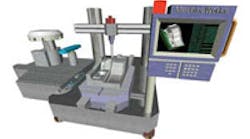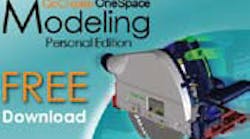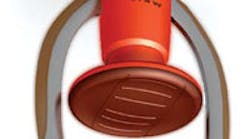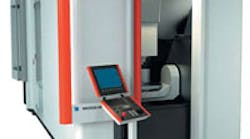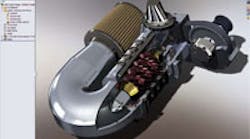Then along came offline verification programs such as Vericut (www.cgtech.com) and Predator (www.predatorsoftware.com) that allow NC programs to be verified – actually simulated – on a personal computer. Now it appears that verification is moving back to the machine at the same time that it is becoming an integral part of many of the CAM software packages in use today, and all of this is being driven by MachineWorks Ltd. in Sheffield, U.K.
According to MachineWorks (www.machineworks.com), if you are using FeatureCAM, Partmaker, Edgecam, GibbsCAM, Mastercam, Solidcam, Esprit, Cimatron or one of more than 60 percent of the CAM software packages on the market today, then you are using NC simulation and verification software made by MachineWorks.
MachineWorks’ technology has been in continuous development for more than 10 years and in 2003 MachineWorks became an independent company when it was spun off from LightWork Design. Since then the has licensed its software as an application toolkit with four modules to software and hardware manufactures.
MachineWorks uses a proprietary vector graphics engine embedded in modules that are customized to match each customer’s needs. Unlike pixel-based graphics (raster), the MachineWorks engine uses a true solid model technology so that users can zoom and rotate,
Their high-speed graphics, combined with advanced hardware technologies such as dual core processors, has made it possible to do simulation and verification on some machine controllers. The most advanced application of this ability at this time is the Okuma MULTUS multitasking machines. There is software embedded in the controller on the Okuma machine that has sufficient built in intelligence to detect a crash before it happens and stop the machine.
Because the MachineWorks toolkit allows developers a wide range of customization, the odds are that you can’t tell if you are using MachineWorks technology or not. It is only recently that the software and hardware developers that licensed the technology would admit to it.
Part of the reason for this recent openness is due to the dawning realization among CAM providers that trying to do all things well is not necessarily the most productive or profitable way to do business.
Just as the automotive and aerospace industries have learned, it is far better to concentrate on the things you do well and outsource for the rest of what you need.
CAM software manufacturers tend to be very good at functions such as tool path and g-code generation. They are realizing that it is better for them to focus on the areas of expertise, then buy the graphics they need. This becomes even more logical as MachineWorks becomes the de facto industry standard for highspeed graphics generation.
